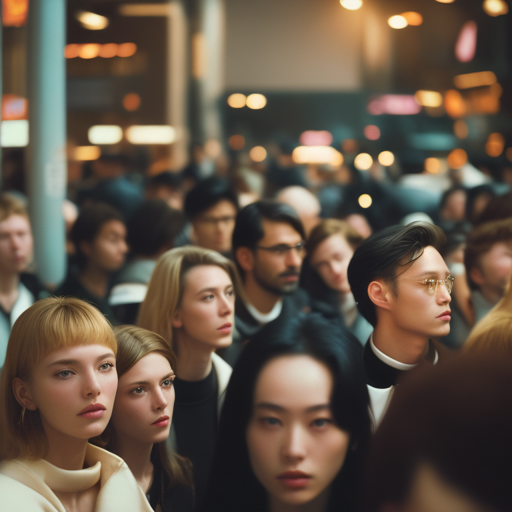In a remarkable leap forward, artificial intelligence (AI) is taking center stage in ensuring public safety through advanced crowd control mechanisms. By harnessing the power of camera surveillance systems, AI algorithms are revolutionizing how authorities manage crowds, detect anomalies, and respond swiftly to potential threats.
Gone are the days of manual monitoring and human error. With AI’s exceptional capabilities, video feeds from surveillance cameras are transformed into intelligent tools that provide invaluable insights for crowd control.
One of the key benefits of AI in crowd control lies in its ability to monitor and analyze crowds in real-time. Using cutting-edge computer vision techniques, AI algorithms can accurately detect and track individuals, estimate crowd density, and monitor movement patterns. This information equips authorities with a comprehensive understanding of crowd dynamics, allowing them to make informed decisions and take necessary actions to maintain public safety.

Moreover, AI excels in anomaly detection within crowds. By continuously analyzing the camera feeds, AI algorithms can identify abnormal behavior and suspicious activities. From aggressive behavior to fights or individuals carrying weapons, AI algorithms act as vigilant watchdogs, promptly alerting security personnel to potential threats. This real-time intervention enables authorities to respond swiftly and effectively, preventing incidents from escalating.
AI’s crowd flow analysis capabilities have also proven invaluable. By studying crowd movement and flow patterns, AI algorithms identify congestion points, bottlenecks, and areas at risk of overcrowding. This information enables authorities to optimize infrastructure, adjust traffic control measures, and implement crowd management strategies, ensuring the smooth flow of people and minimizing safety hazards.
But AI’s impact extends beyond real-time monitoring and analysis. Through predictive analytics, AI leverages historical data and real-time information to forecast crowd behavior. This capability allows authorities to proactively allocate resources and plan ahead for large gatherings, protests, or events that may require additional security measures. By staying one step ahead, law enforcement can effectively maintain public safety and enhance their crowd control strategies.
In addition, AI-driven camera surveillance systems are equipped with automated alerts and response mechanisms. When predefined events or conditions are detected, such as a sudden surge in crowd density or unauthorized access to restricted areas, the AI system triggers immediate notifications. This ensures a rapid and coordinated response from security personnel, mitigating potential risks swiftly and decisively.
Furthermore, AI plays a crucial role in post-event analysis. By analyzing footage captured during an event, AI algorithms generate comprehensive reports on crowd behavior. These reports help authorities identify areas for improvement, optimize crowd control strategies, and enhance safety measures for future events.
While the benefits of AI in crowd control are evident, it is essential to ensure ethical implementation and respect for privacy. Striking a balance between public safety and individual privacy is paramount. Regulations and oversight must be in place to govern the use of AI systems for crowd control, guaranteeing transparency and accountability.
As AI continues to evolve and transform various aspects of our lives, its integration into camera surveillance systems represents a significant milestone in crowd control. By harnessing the power of AI, authorities are equipped with intelligent tools that enhance public safety, proactively detect threats, and ensure the smooth management of crowds. As a result, communities can enjoy safer environments during large gatherings, events, and public spaces.

Leave a Reply